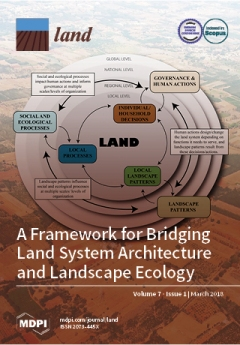Resources
Displaying 2256 - 2258 of 2258Monitoring and Analysing Land Use/Cover Changes in an Arid Region Based on Multi-Satellite Data: The Kashgar Region, Northwest China
In arid regions, oases ecosystems are fragile and sensitive to climate change, and water is the major limiting factor for environmental and socio-economic developments. Understanding the drivers of land use/cover change (LUCC) in arid regions is important for the development of management strategies to improve or prevent environmental deterioration and loss of natural resources.
Satellite Monitoring of Vegetation Response to Precipitation and Dust Storm Outbreaks in Gobi Desert Regions
Recently, droughts have become widespread in the Northern Hemisphere, including in Mongolia. The ground surface condition, particularly vegetation coverage, affects the occurrence of dust storms. The main sources of dust storms in the Asian region are the Taklimakan and Mongolian Gobi desert regions. In these regions, precipitation is one of the most important factors for growth of plants especially in arid and semi-arid land. The purpose of this study is to clarify the relationship between precipitation and vegetation cover dynamics over 29 years in the Gobi region.
Inclusive Businesses and Land Reform: Corporatization or Transformation?
Inclusive businesses (IBs), embodying partnerships between commercial agribusinesses and smallholder farmers/low-income communities, are considered to contribute towards rural development and agricultural sector transformation. Structured as complex organizational set-ups consisting of, and overcoming the limitations of, standard inclusive instruments (collective organization, mentorship, supply contract, lease/management contract and equity), they allow for the inclusion of smallholders and low-income communities into commercial agricultural value chains.


